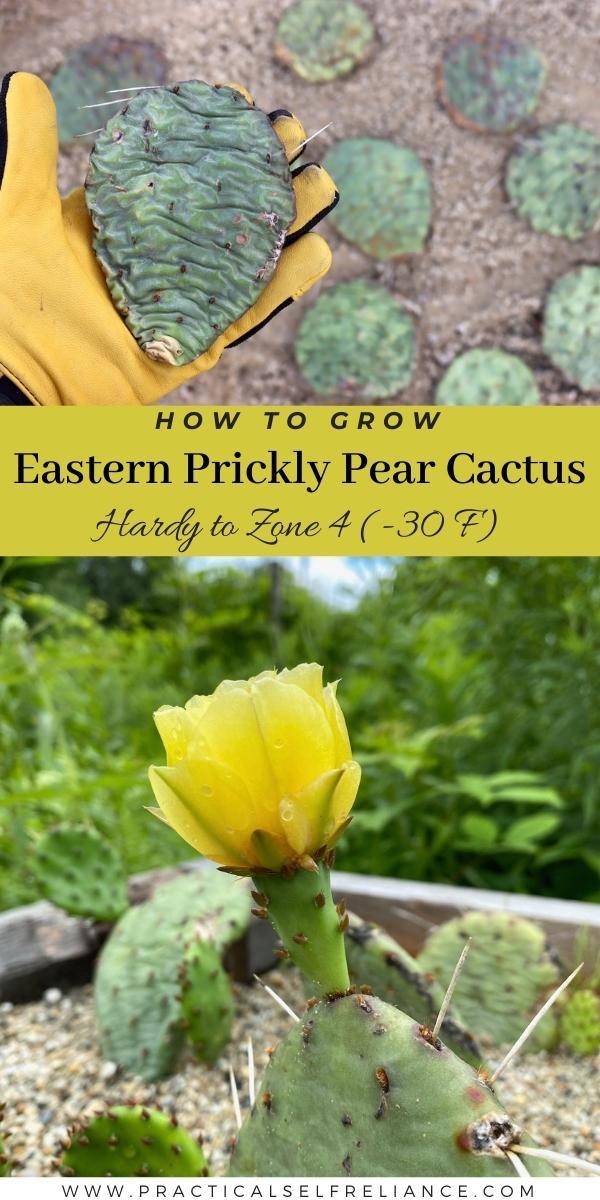Eastern prickly pear cactus (Opuntia humifusa) is a remarkable plant. Despite its desert origins, this cold-hardy cactus thrives in the Eastern United States, making it accessible to gardeners in even the coldest regions. Imagine growing your own prickly pear fruits right at home, regardless of whether you live in the desert or not!
Our homestead, which serves as our garden playground, is home to a diverse range of fruits and vegetables. We aim to provide for all our fruit needs year-round from our permaculture orchard, including early-ripening and late-ripening fruits, as well as hardy storage varieties like storage apples. Alongside the usual favorites, we cultivate numerous types of cold-hardy fruits, such as honeyberries, thimbleberries, salmonberries, and shipova. Perennial vegetables, cold-hardy peaches, and nut trees also grace our garden.
Living in a cold climate does not limit our ability to grow diverse crops. With a little research, you can discover the right plant varieties for your region. For instance, we have successfully grown a cold-hardy cactus variety from Prarie Moon Nursery, despite living in Vermont, where cacti are uncommon.
Eastern prickly pear cactus thrives in dry sandy spots throughout New England. Although these types of soils may not be typical in backyard gardens, creating a small cactus box allows anyone to cultivate their own prickly pear fruits, even in the far north.
I have fond childhood memories of harvesting prickly pear from my grandfather’s backyard in the Mojave desert. Now, I look forward to harvesting my own northern prickly pear from my cactus garden, alongside our asparagus and homegrown ramps. It’s truly amazing what you can achieve with some determination and research!
Eastern Prickly Pear Cactus Range
The natural range of the Eastern Prickly Pear stretches across the Eastern half of North America, reaching all the way up into Canada and down to Florida. However, it is not native to Vermont, as our soils tend to be fine, rich, and moisture-retentive, favoring native plants that thrive in damp conditions, such as highbush cranberry, nannyberry, and wild gooseberries.
Despite this, with a little preparation and the right soil conditions (primarily straight sand with good drainage and minimal organic matter), you can successfully grow Eastern prickly pear cactus even in Vermont.
Where to Buy Eastern Prickly Pear Cactus
If you’re interested in growing Eastern prickly pear cactus, you can order cactus pads from Prarie Moon Nursery. These pads typically cost around $4 to $5 each, depending on the quantity you order. When I first ordered them, I expected some losses, but to my surprise, they all survived!
My husband teasingly refers to them as my “expensive pets,” and in a way, I suppose they are. I watched over them all summer, fascinated by the fact that I was successfully growing cacti in zone 4!
In addition to cactus pads, Prarie Moon Nursery also sells seed packets, although I don’t have personal experience with them.
How to Grow Eastern Prickly Pear Cactus
Growing Eastern prickly pear cactus is relatively straightforward. Prarie Moon Nursery provides simple instructions: plant the pads cut side down in sandy soil. That’s it!
For my small cactus raised bed, I used washed play sand (sandbox sand) that I purchased from the hardware store. I filled the bottom 4 inches of the planter with compost to provide a nutrient reservoir and some moisture for the cactus roots. The top 8 inches consisted of straight sand.
With gloves on, I carefully planted each cactus pad about 1 inch deep in the sand. It’s important to be cautious of the tiny hair-like spines on the pads, as they can cause irritation similar to touching fiberglass insulation.
Once planted, Eastern prickly pear cactus pads require minimal attention. They quickly perked up and lost their wrinkles, regaining their plump appearance. Some even started sprouting more pads, with one pad even producing a young flower bud within a few weeks of transplantation!
Though this first season may not yield fruits, as it takes time for the plant to develop fully, I am excited to see what the next year holds. As the cacti multiply and thrive, I plan to transplant some pads to a new bed, as they can become crowded.
Eastern prickly pear cactus has a low growth habit, rarely exceeding 1 foot in height. It spreads out like a ground cover, making the cactus box full and lush. It is this low growth pattern that allows it to survive under snow cover during freezing temperatures.
Exploring Unique Edible Plants
In the upcoming year, we have even more exciting edible “pets” planned for our garden. One of these is yacón (Smallanthus sonchifolius), a perennial tuber akin to sunflowers, known for its sweet and fresh flavor reminiscent of apples. Yacón is native to the Andes and hardy to zone 5. We also plan to expand our strawberry beds to include various alpine strawberry varieties, along with Musk Strawberries, Pineberries, and Strasberries. Our garden will be brimming with unique and delicious treats!
If you’re interested in growing more unique fruits in your backyard, be sure to check out these helpful articles:
- How to Grow Honeyberries
- How to Grow Husk Cherries
- How to Grow Shipova
- How to Grow Nanking Cherry
- How to Grow Salmonberries
- How to Grow Cornelian Cherry


